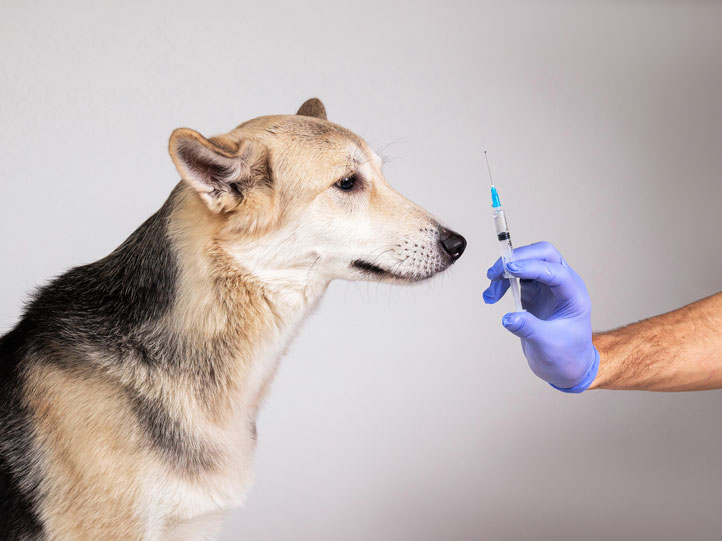Whenever your pet friend is determined to have any ailment, it may overpower. As your psyche is in shock, it’s feasible to miss essential data about your pet’s disease, like its causes, medicines and caution signs. Regardless of whether your pet’s sidekick has gotten a diabetes finding, it can, in any case, carry on with a long and cheerful life. We can guarantee that your pet’s diabetes is overseen with excellent correspondence and cooperation, so sit stays as solid as expected. If your pet has been determined to have diabetes, read on for ten realities you ought to know.
1 GIVE A REGULAR DIET TO YOUR PET
In case you’re observing your pet’s blood glucose at home, you might have a space to enliven its supper plan, yet, in a perfect world, stick to food varieties with similar nourishing parts and calories to guarantee appropriate insulin doses. It would help if you took care of diabetic pets with food varieties high in protein and fibre to consider more slow glucose retention while keeping away from the abundance of carbs, fats and sugars.
2 SCREEN YOUR PET FOR INDICATIONS OF HYPOGLYCEMIA
Although it is not favourable for the pet to be hyperglycemic, hypoglycemia is significantly more troubling. In case your pet’s glucose dips under ordinary levels, keep an eye out for these symptoms:
- >Laziness
- >Shortcoming
- >Absence of craving
- >Loss of coordination or equilibrium
- >Pupils are dilated
- >Bewilderment or disarray
- >Seizures
- >Coma/Extreme lethargies
Hypoglycemia is a crisis condition. Preferably, utilize a glucometer to monitor your pet’s glucose at home before scouring Karo or maple syrup on its gums. If you notice any hypoglycemia signs, make a quick move.
3 LEARN TO CONTROL YOUR PET’S INSULIN
Jabbing your pet with a needle can be unnerving. Request various exhibits and practice with experts until you feel open to managing infusions. The following are a couple of other critical tips about insulin:
- -Keep refrigerated except if generally stated.
- -Vetsulin is the central insulin that is shaken to blend appropriately. All others are tenderly moved to blend.
- -Confirm your insulin matches your needles (U-40 or U-100).
- -Twofold-check the portion you bring into your needle.
- -Check to ensure the insulin infusion goes under your pet’s skin by feeling for wetness.
4 COMPREHEND THAT DIFFERENT ILLNESS CYCLES CAN INTERFERE WITH INSULIN METABOLISM
Different ailments can influence how your pet’s body processes its insulin. Urinary plot contaminations, Cushing’s sickness and dental illness are normal in diabetic pets and can increment insulin prerequisites. If you have a diabetic pet, keep steady over its oral medical care routine to guarantee its insulin works fittingly.
5 DON’T GIVE THE PET INSULIN; IF IT DOESN’T EAT
A diabetic pet must eat before you manage insulin. For best outcomes, infuse insulin in one hour later meals to forestall glucose spikes. Many of you like to regulate insulin while your pet eats to exploit that interruption, yet, that’s what assuming you do, confirm your pet eats all its food. Take a stab at giving it insulin toward the finish of its supper, so no portion changes are required for an incomplete dinner.
6 ADHERE TO A CONSISTENT WORKOUT PRACTICE
Extreme shifts in workout routines can mess up your pet’s glucose. Suppose your pet is habitually lazy and its insulin portion is determined for those energy necessities. In that case, a day-long and rigorous hike will modify its body needs to stay stable. Ordinary, moderate activity is best for keeping a solid weight and excellent health.
7 REMOVE BUSINESS TREATS
Most business pet treats are crammed with carbs and loaded down with sugar. Trade out your pet’s regular treats with full-protein snacks, like freeze-dried or fresh lean meats. New veggies are an extraordinary decision if they are low in carbs and high in fibre.
8 SPIN INFUSION SPOTS
While prescriptions are assimilated at various rates in body regions, you will need to turn your insulin infusion spots. Assuming you give an infusion in precisely the same area two times per day, scar tissue will create and obstruct ingestion. Attempt to turn from the left to right shoulder.
9 NOTICE ANY CATARACT DEVELOPMENT
Although with surgery, 75% of pets foster cataracts and visual deficiency in their eyes within nine months of diabetes detection. Early findings and insulin guidelines are pivotal in keeping up with your pet’s visual perception. Be that as it may, assuming cataracts create and go uncured, the lens capsule can crack, irritation can prompt glaucoma and it might command to extract your pet’s eyes for it to be congenial.
10 IF YOU GIVE YOUR PET INSULIN TWO TIMES EVERY DAY, ATTEMPT TO TIME IT AS NEAR 12 HOURS SEPARATED
We comprehend that having a diabetic pet requires enormous time, particularly while guaranteeing two times regular insulin infusions at a specific time. Let the experts know if you can’t reliably give insulin infusions at the planned times. They can help you track down an alternate arrangement that accommodates your way of life.
Overall, the above facts can help you manage your pet’s diabetic lifestyle in the best possible manner.





